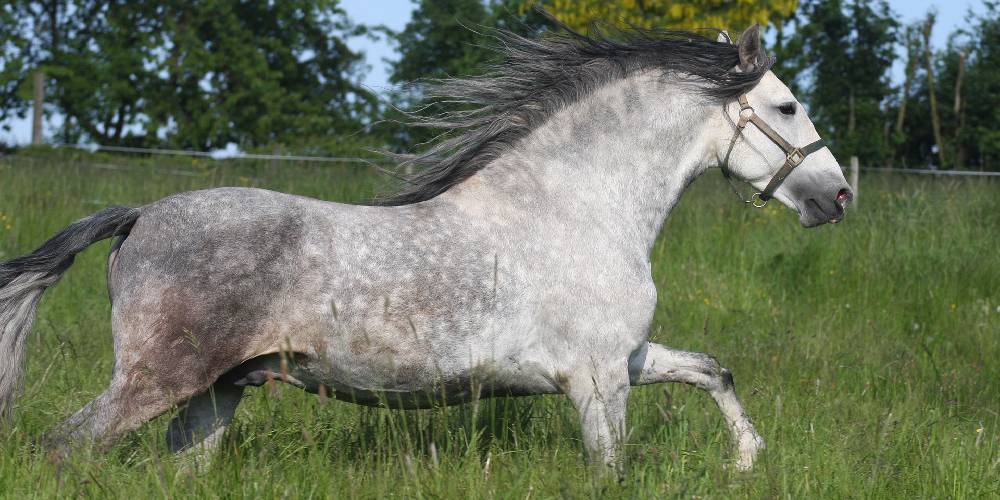Dapple grays are one of my favorite coat colors seen in the horse world. But did you know that a horse is only dappled for a few years of its life? What do they look like before and after they get dapples? and what breeds can dappled grays be seen in?
What Is A Dapple Gray?
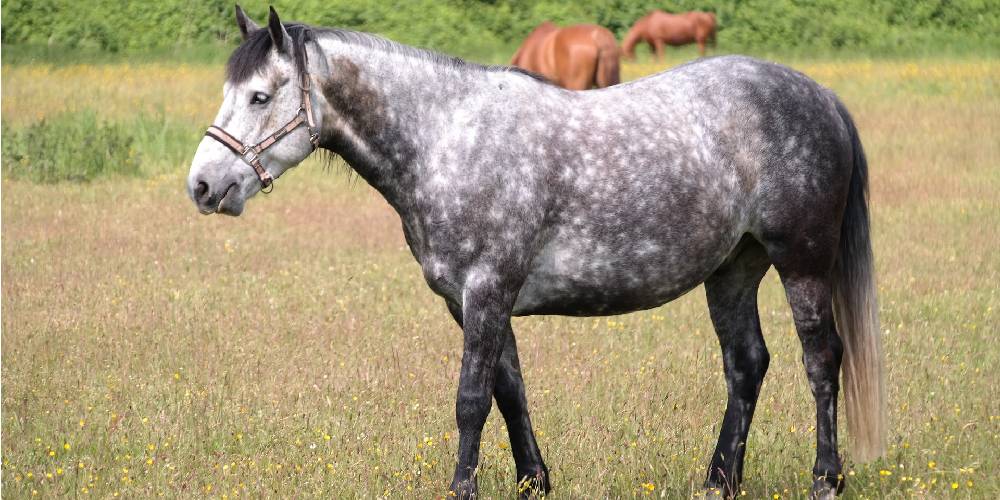
A dapple-gray horse is a horse that is going through the process of ‘graying out.’ This just means their coat is turning from black or brown to white. Dapples are dark rings with a white or grey middle scattered all over the horse’s body. Typically dapples are seen on younger horses between the ages of two and four years old as this is when the horse is beginning to mature and become an adult. Gray horses are born black or brown so dapples are there because the horse is beginning to mature; gray horses turn white in little areas before becoming completely white.
What Color Are Dapple Grays Before They Start “Graying Out?”
All gray horses are born as a solid black, bay, or chestnut foal. Sometimes there is almost no indication that the foal will turn gray, but usually, there might be white hairs on the face or body mixed in with their base color indicating the horse may ‘gray out.’
Can Dapples Only Be Seen On Grays?
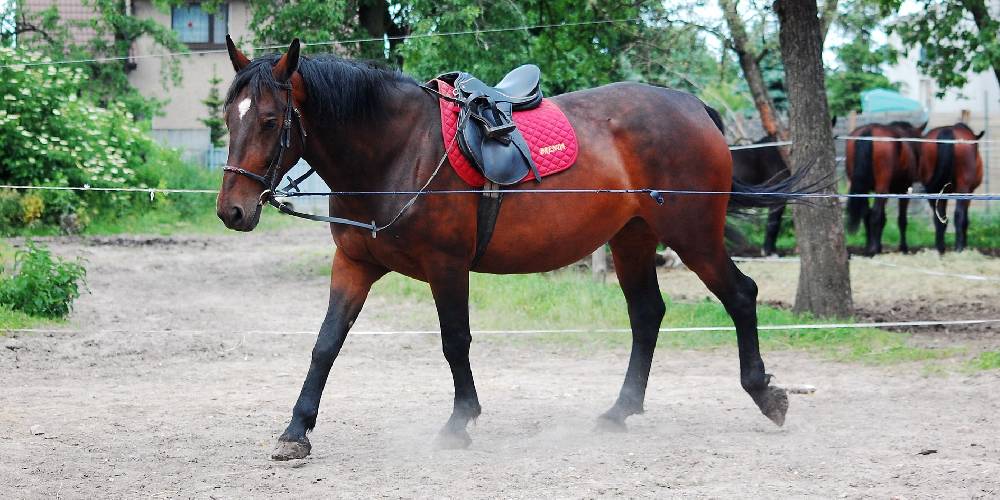
No, actually dapples can be seen on palominos, buckskins, bays, and occasionally on a chestnut. The main coat color that carries dapples however is gray.
Breeds Where Dapples Are Commonly Seen
Arabian
Dapples are commonly seen in the Arabian breed, mainly in the gray Arabians. There may be some bay Arabs that have dapples, but it is common to see an Arabian with dapples to be gray.
Dapple Gray Arabians are seen often in both the English and Western Arabian competitions.
Thoroughbred
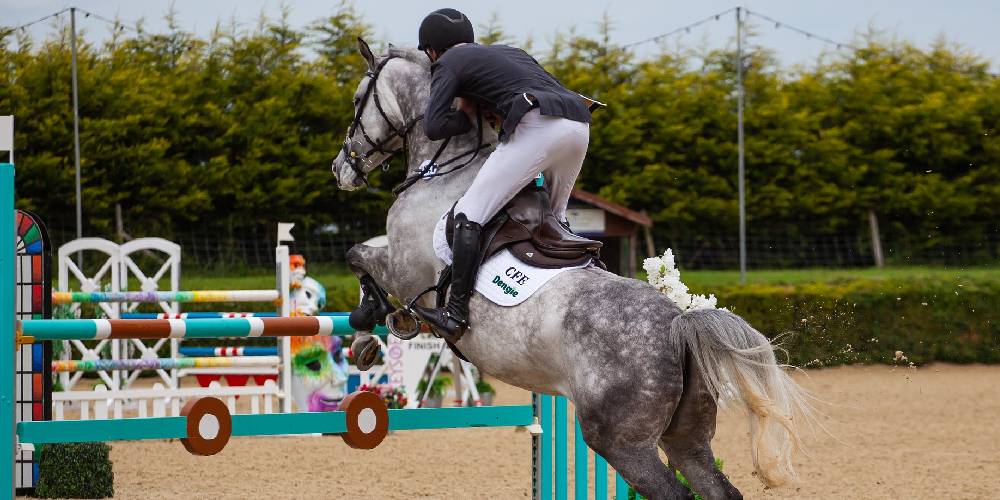
Many Thoroughbreds are dapple grays because gray is one of the more common coat colors for the breed. Thoroughbreds can also be bay or chestnut and have dapples as well.
Belgian
Belgians really only come in the chestnut color with a flaxen mane and tail. These horses, though typically solid in color, may occasionally have dapples doing through their coat
Akhal-Teke
This breed will commonly have dapples mixed into their bay horses. This rare breed with a dapple coat pattern makes them look amazing.
Connemara
Connemara ponies from Ireland can come in nearly every color and can be seen with dapples in bay, gray, and chestnut.
Gray is one of the most common colors for these ponies so finding a dapple gray Connemara is not a rare sight.
Irish Draft
This breed, like the Connemara, originated in Ireland and can come in nearly every color as well. These horses can have dapples whether they are bay, gray, or chestnut giving them a variety of coat colors and patterns.
Welsh Pony
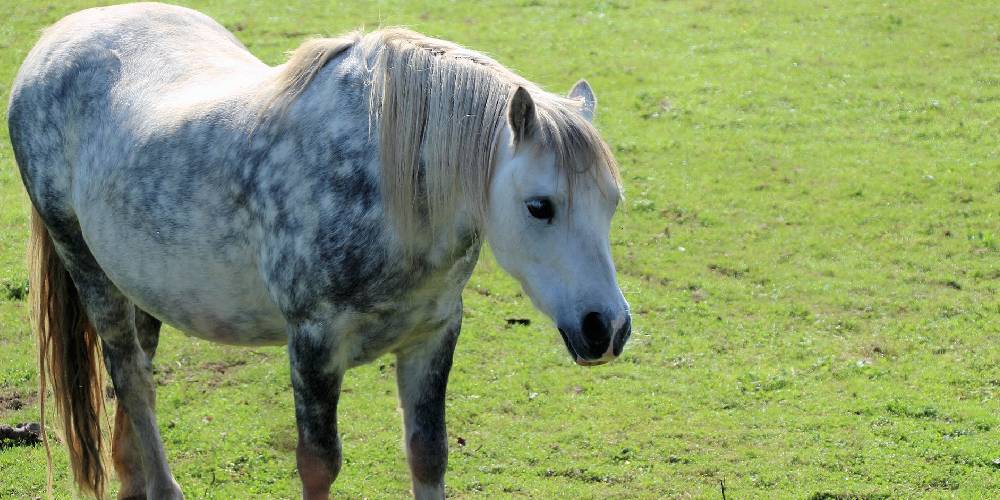
One of my good friends has a welsh pony who now is completely grey/white. When she got him at the age of four he had lots of beautiful dapples which have faded overtime. The welsh pony is often seen with dapples no matter the coat color.
Dartmoor and Exmoor Ponies
These ponies are mainly seen as bay but can come in a dappled bay color as well. I love the way the dapples look on these ponies.
Shetland
Shetland ponies can come in nearly ever color and pattern under the sun. Dapples are not an uncommon find when looking at the adorable grey ones.
Hackney
This flashy breed is a carriage horse which is mostly seen to be a bay. Dapples can be seen, though uncommon, on these small horses. Typically if there are dapples they will appear on the shoulder and hindquarters.
At What Age Do Dapples Come In And Disappear on Gray Horses?

Dapples will begin to show up and disappear at different times for different horses. On average however, dapples will come in on grays around the age of two years old and stay prominent until the age of five.
A friend of mine had an Arabian stallion who, at the age of four, was completely gray/white in color. The only dark colors left on him were streaks in his mane and tail. This goes to show that every gray is different
What Is The Difference Between Dapple Gray and Flea-Bitten Gray?
Dapple gray is a coat color or pattern that is only temporary. Gray horses will only have dapples for a few years before they start fading out into white. Some flea-bitten grays will even start out as dapple grays before fading to the flea-bitten ticking pattern prevalent in their coat.
Flea-bitten gray is a coat color or pattern that will remain the same throughout the horse’s entire life. This coat color, rather than consisting of white dapples, consists of a white base color with colored flecks across the horse’s entire body. These horses will remain this color until the day they die.
Fun Fact: The flecks found in a flea-bitten gray coat are the same color that the horse is born as. If a horse is born black, then as an adult the flecks in their coat will be black!
Stages of the “Graying Out” Process
Foal
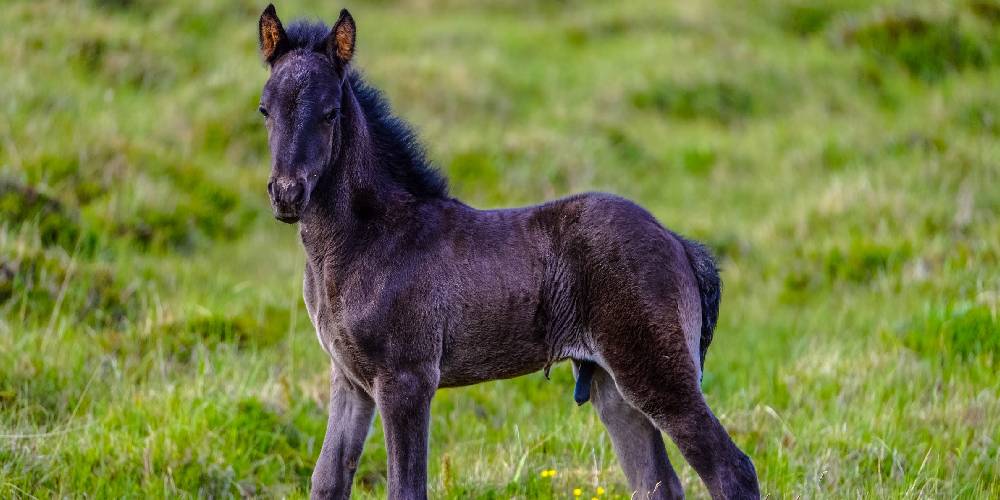
All gray horses are born a dark solid color. Only Palominos, Cremellos, and White/Albino horses are actually born a ligh color.
The colors that these horses are born can be black, bay, and chestnut. These horses may have an indicator that they will eventually turn grey if there are spots on the horse where there are a few white hairs mixed into their base color. These horses will remain mostly solid in color for the first year of their life.
Yearling
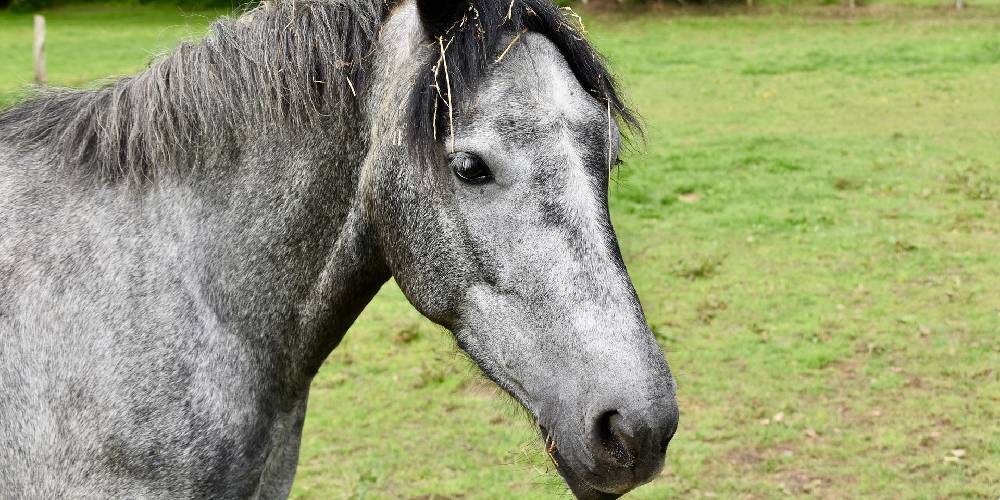
Often times, yearlings will have started to show definite signs that they will turn grey. Small dapples may start to appear in their coat, but for most there will just be more white hairs mixed into the coat making it more of a gray color than their original solid color.
Two Year Old
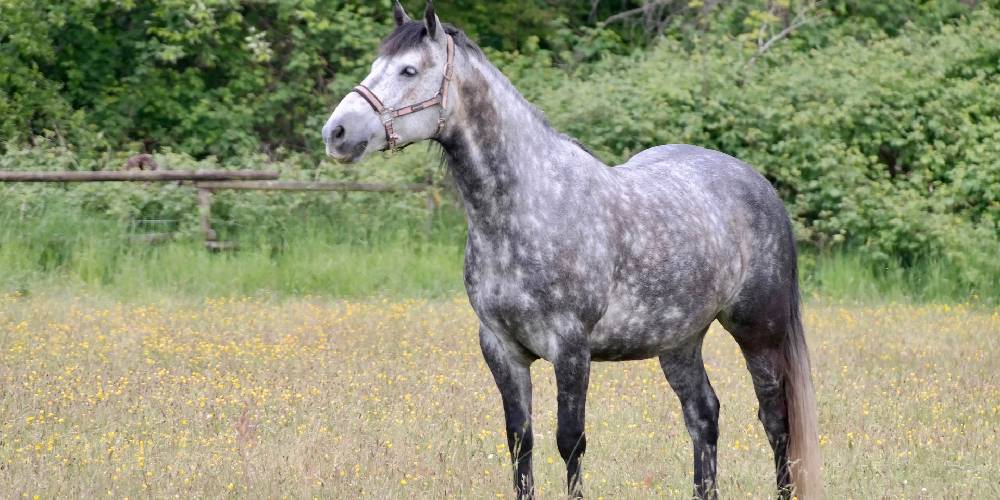
At this point in the gray’s life, dapples will be a prominent feature of their coat. These horses will usually still have a dark coat overall but their dapples will be bigger and their face may have even turned light gray if not completely white.
Four Year Old
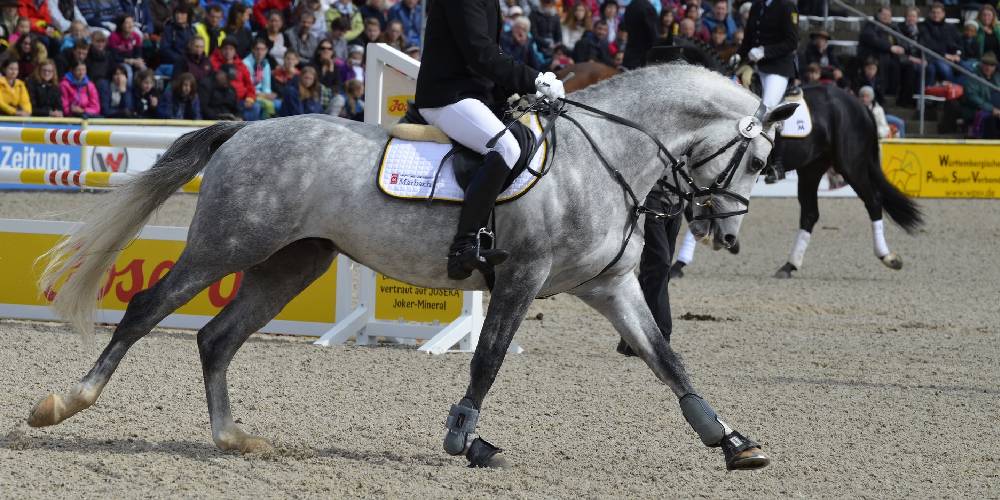
When a horse is at four years old it is now considered fully grown. The dapples in a gray’s coat at this point in its life will have started to connect in some areas and the dark rings will have faded from a dark prominent color to a lighter gray color.
Six Year Old
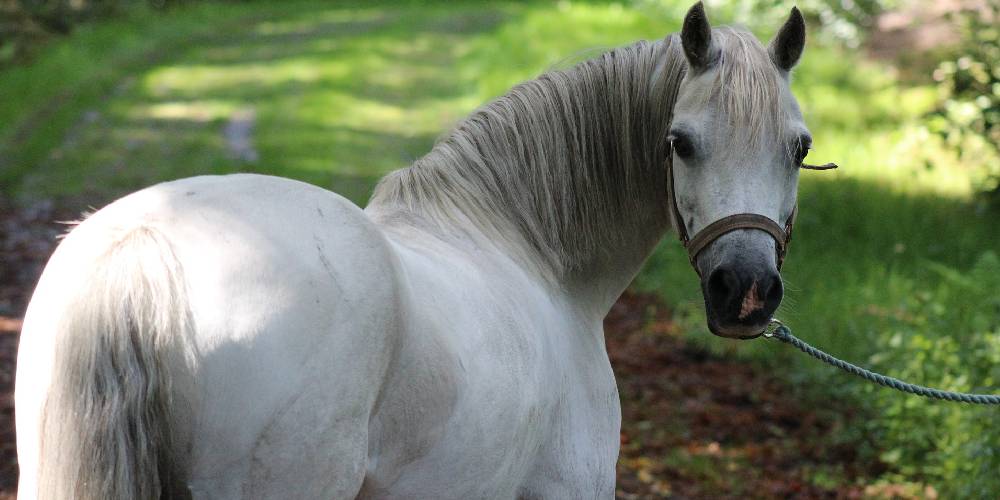
At six years old, the horse may have turned completely white/gray all over. If there are still dapples in their coat they will be found usually on the horse’s shoulders and hindquarters. The gray color, if there is any remaining, will be really light and will most likely fade in the next year if it hadn’t faded entirely.

